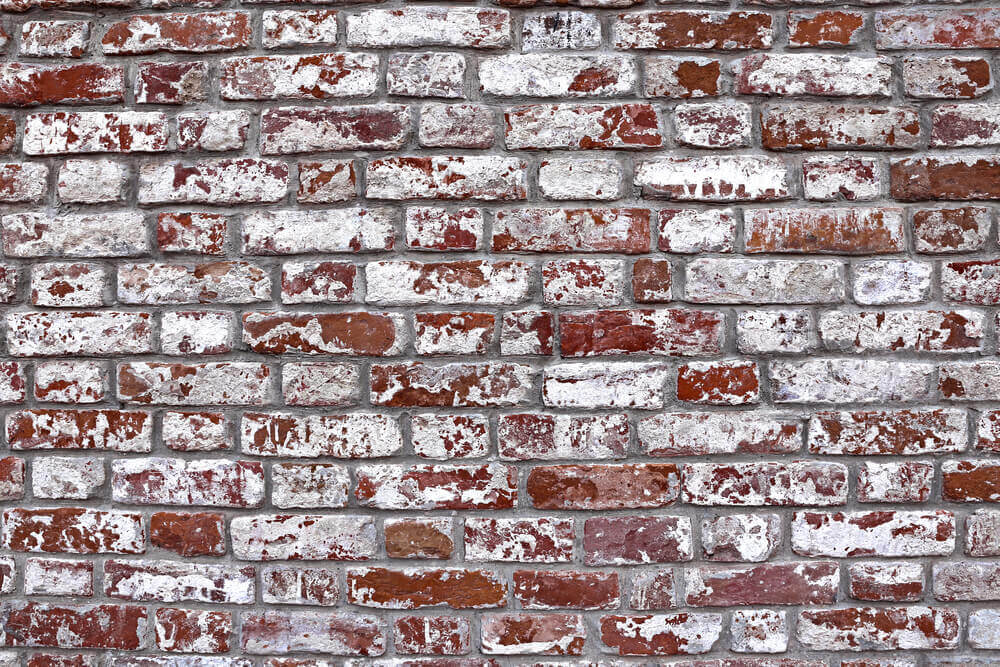
The white or grey staining and powder seen on bricks, walls, masonry, and stone – known as Efflorescence – can be frequently identified on homes and buildings.
Many will think that cleaning the affected area quickly will resolve the problem. But efflorescence is a long-term problem that cannot simply be cleaned off.
What is Efflorescence?
Efflorescence is, in technical terms, the migration of a salt to the surface of a porous material. It appears like a white powder at first, and in extreme cases, can form intricate crystals. As the water in building materials such as concrete, mortar and brickwork, rises to the surface, it carries to the surface water soluble salts, which solidify on the outside of a building.
While efflorescence won’t damage the structure of your building, the appearance and prolific-ness of it can signify other issues.
Identifying Efflorescence

Efflorescence will often first appear as a white salt or powder-like substance on the surface of mortar, bricks, and concrete.
The easiest way to identify efflorescence is by noticing whether the substance looks like a white powder on a wall. If it looks like it is growing out of a wall, then it will likely be efflorescence. It’s nothing to be concerned about if it comes off with easy cleaning and doesn’t return.
How to Remove Efflorescence
Efflorescence can be removed by either DIY methods or professionals.
DIY Methods to Remove Efflorescence
There are two easy DIY methods: simple washing and power washing.
1) Simple Washes
A simple wash can be done by using a stiff brush, whether metal or natural fibres, before using washing up liquid and a lot of elbow grease.
Just scrubbing the wall with hot water won’t remove efflorescence, but if you apply some elbow grease, you’ll end up with a clean wall. This is best done when you first spot the efflorescence, as the longer you leave it, the harder it is to remove.
2) Power washing
By renting a power washer from your local DIY store, you can quickly cover large spaces and remove surface deposits of efflorescence salts. Don’t put the pressure too high or you could actually make the problem worse by wearing down your wall or surface.

Professional Methods to Remove Efflorescence
Professional companies can remove efflorescence fairly easily. They’ll use one of two methods, either sandblasting or chemical cleaning.
As these both have potential to do a lot more damage, it is often best to let them just get on with it, as you don’t want to affect the structure of your wall.
You should always speak to a professional when the efflorescence doesn’t disappear after a round of hand washing, or when you find that the efflorescence is contained to one spot.
1) Sandblasting
Sandblasting removes the top layer of bricks, mortar and other materials but the abrasion of the material can easily remove too much if done wrong. After sandblasting, the surface will need resealing.
2) Chemical cleaning
There are specialist efflorescence removal chemicals, but as these can penetrate into the stone if the stone has not been soaked correctly; chemicals can also do more harm than good.
After a chemical clean has been done, the area will need neutralising with an alkaline, which can be anything from baking soda to a professional solution.
Why Efflorescence Shouldn’t Be Ignored
While in heavy weather, wet bricks is a very normal thing, efflorescence in a particular spot or following a water course or pipe system can be indicative of a serious leak or further problem.
If you do have efflorescence in your home or building, always get it checked out if it doesn’t go away after cleaning.
Speak to Restorations [UK]
At Restorations UK we’re able to do a variety of building surveys, including leak detection with non-invasive measures. This means that we don’t need to take down walls but can instead use technology to find problems.

